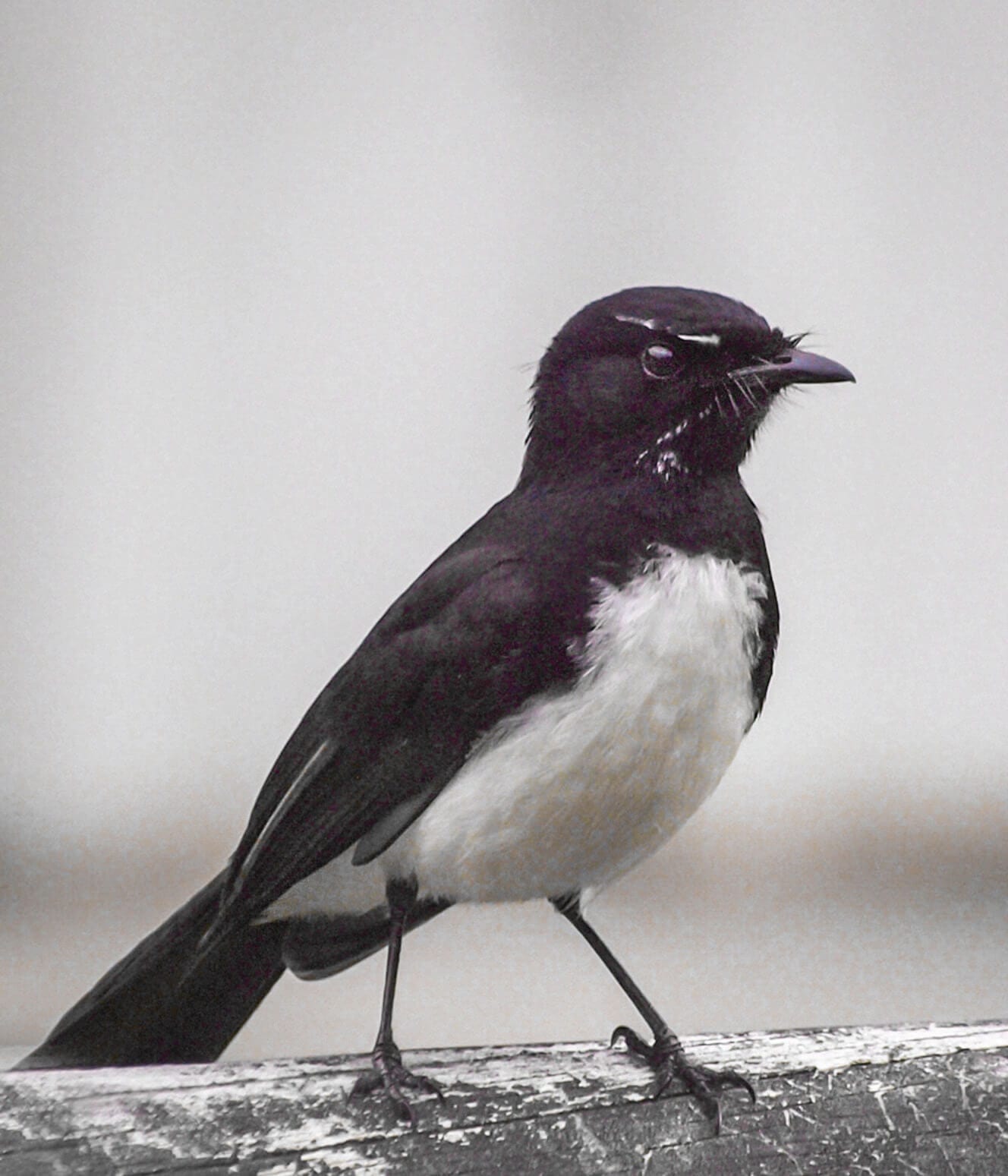Tags: Australian Birds. Wildlife.
I remember the first time I saw a Restless Flycatcher. It was at Ewan Maddock Dam and the bird was high up in a tree in open woodland. I watched in amazement at its fidgety performance, with a wagging tail and nervous movements while perched on a branch. Restless Flycatchers have been sighted on Bribie Island but not very often. They prefer open forests and are more likely to be seen in winter.
Featured Image(above): Not to be confused with the Willy Wagtail
I have since spotted them singly or in pairs in several other locations in Australia. The most recent sighting was at Theodore. They are not found in large numbers anywhere but are spread over a considerable area. Restless Flycatchers are smallish, black and white passerine birds with a faint buff smudge on their breasts and small crests on the top of their heads.
They are 16-21 cm in length and are similar to and sometimes mistaken for Willy Wagtails that are often found in the same locations. Male and female are very much alike. Their call is a rasping, grinding sound which is why they are sometimes called “Scissors Grinders”. Insects are the main item on the diet which are caught on the wing. They will also hover in an almost vertical position and collect their prey from foliage and branches.

Restless Flycatcher
The grinder sound is maybe to frighten sedentary insects and spiders into moving to a more exposed position thus becoming easier to gather. Restless Flycatchers seldom feed on the ground. Nests are bowl-shaped and built in the forks of trees near water and are not unlike the Willy Wagtail’s nests. They are made of grass and bark and are woven together with cobwebs and lined with fur or other soft materials. Nests are often built in the same place each year. Clutches are made up of 3-4 white eggs with brown speckles. Both parents build the nests and incubate the eggs. Incubation takes about 2 weeks.
 In 13-16 days, the young fledge and fly off a short time later. There can be up to three broods produced in one season. The Restless Flycatcher was first recorded by John Latham in 1801. Their scientific name is of Latin origin – “inquieta” is from the Latin “inquietus” which means restless. Conservation status is secure now, but the population is decreasing.
In 13-16 days, the young fledge and fly off a short time later. There can be up to three broods produced in one season. The Restless Flycatcher was first recorded by John Latham in 1801. Their scientific name is of Latin origin – “inquieta” is from the Latin “inquietus” which means restless. Conservation status is secure now, but the population is decreasing.
